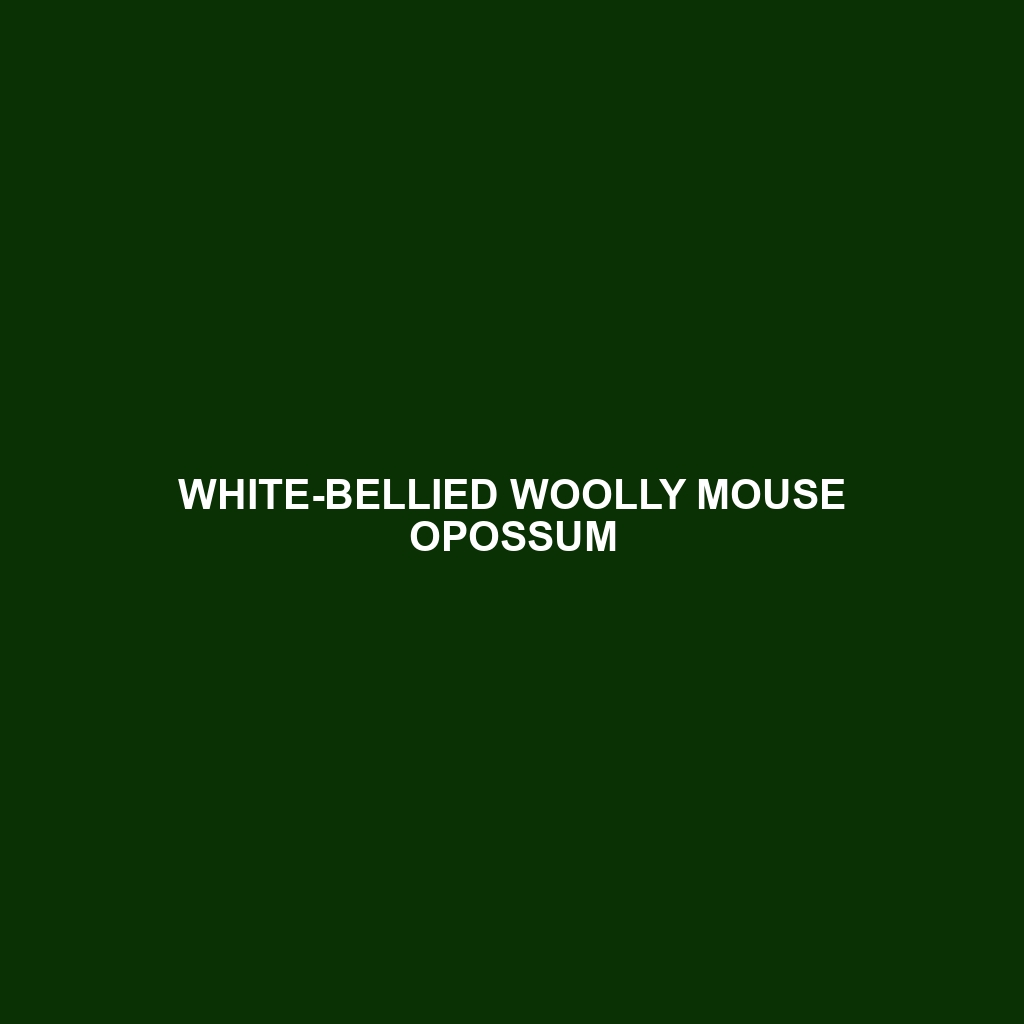White-bellied Woolly Mouse Opossum: A Detailed Description
:
The White-bellied Woolly Mouse Opossum (Marmosa constantiae) is a small, nocturnal marsupial known for its distinctive, woolly fur and striking white belly. This elusive creature is found primarily in the tropical and subtropical forests of South America. Despite its small size, the White-bellied Woolly Mouse Opossum plays a vital role in its ecosystem, contributing to seed dispersal and insect control.
Physical Characteristics:
Size: The White-bellied Woolly Mouse Opossum is relatively small, with an average body length of 10 to 15 cm (4 to 6 inches) and a tail length that can measure up to 17 cm (6.7 inches). They typically weigh between 25 to 40 grams (0.9 to 1.4 ounces).
Coloration: As its name suggests, this opossum has a white or cream-colored belly, which contrasts sharply with its darker, brownish-grey back. Its fur is dense and woolly, providing excellent insulation.
Special Features: One of the most notable features of this species is its prehensile tail, which it uses to grasp branches as it navigates the forest canopy. It also has large, rounded ears and prominent, black eyes that are well-adapted for nocturnal vision.
Behavior:
Social Interactions: The White-bellied Woolly Mouse Opossum is generally solitary, coming together only for mating purposes. They are known to be quite territorial.
Feeding Habits: These opossums are omnivorous, with a diet that includes fruits, insects, small vertebrates, and nectar. Their feeding habits make them important seed dispersers in their habitats.
Ecological Role: By feeding on a variety of insects and small animals, they help control pest populations. Their role as seed dispersers also aids in forest regeneration.
Habitat:
Range: This species is found in the tropical and subtropical forests of South America, including countries like Brazil, Bolivia, and Peru.
Environment: They primarily reside in the forest understory and are adept climbers, often found in the lower to mid-canopy levels of trees. They prefer humid environments with dense foliage.
Adaptations:
Prehensile Tail: Their prehensile tail is a key adaptation for an arboreal lifestyle, allowing them to grip branches securely.
Nocturnal Vision: Large, black eyes enhance their ability to see in low-light conditions, which is crucial for their nocturnal activities.
Woolly Fur: The dense, woolly fur provides insulation, helping them maintain body temperature in varying climatic conditions.
Conservation Status:
The White-bellied Woolly Mouse Opossum is currently not listed as endangered, but like many forest-dwelling species, it faces threats from habitat destruction due to deforestation and human encroachment. Conservation efforts are essential to ensure the survival of their natural habitats.
Fun Facts:
Marsupial Pouch: Unlike some other marsupials, the White-bellied Woolly Mouse Opossum females do not have a well-developed pouch. Instead, they carry their young on their backs.
Agile Climbers: These opossums are incredibly agile and can leap from branch to branch with ease, making them excellent at evading predators.
Silent Hunters: Despite their small size, they are effective nocturnal hunters, using their acute senses to locate prey in the dark.
By integrating this detailed profile on your website, you can provide readers with a comprehensive understanding of the White-bellied Woolly Mouse Opossum, highlighting its unique attributes and importance within its ecosystem.
